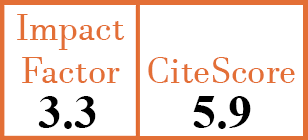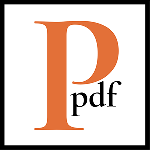Paediatric Rheumatology
Immunogenicity and safety of the inactivated hepatitis A vaccine in children with juvenile idiopathic arthritis on methotrexate treatment: a matched case-control study
D.N. Maritsi1, S.E. Coffin2, I. Argyri3, G. Vartzelis4, N. Spyridis5, M.N. Tsolia6
- Second Department of Paediatrics, P. & A. Kyriakou Children’s Hospital, University of Athens, Greece. dmaritsi@gmail.com
- Division of Infectious Diseases, Centre for Paediatric Clinical Effectiveness, and Department of Infection Prevention, Children's Hospital of Philadelphia, PA, USA.
- Second Department of Paediatrics, P. & A. Kyriakou Children’s Hospital, University of Athens, Greece.
- Second Department of Paediatrics, P. & A. Kyriakou Children’s Hospital, University of Athens, Greece.
- Second Department of Paediatrics, P. & A. Kyriakou Children’s Hospital, University of Athens, Greece.
- Second Department of Paediatrics, P. & A. Kyriakou Children’s Hospital, University of Athens, Greece.
CER9977
2017 Vol.35, N°4
PI 0711, PF 0715
Paediatric Rheumatology
Free to view
(click on article PDF icon to read the article)
PMID: 28721859 [PubMed]
Received: 02/10/2016
Accepted : 05/04/2017
In Press: 13/07/2017
Published: 13/07/2017
Abstract
OBJECTIVES:
To describe the immunogenicity and side effects of immunisation against hepatitis A virus (HAV) in JIA patients on methotrexate treatment, who have not been previously exposed to HAV.
METHODS:
Case-control study performed in JIA patients and healthy controls matched on age and gender. The subjects received two doses of inactivated anti-HAV vaccine (720 mIU/ml) intramuscularly at 0 and 6 months. Seroconversion, seroprotection rates and anti-HAV-IgG titres were measured at 1, 7 and 18 months. Children were monitored for adverse events.
RESULTS:
83 JIA patients and 76 controls were enrolled in the study. At one month, seroprotection rates were lower in children with, as compared to those without JIA (48.2% vs. 65%; p=0.05). At 7 and 18 months, rates of seroprotection rose significantly and were similar in both groups. The titre of anti-HAV-IgG was lower in children with JIA than healthy children at all time points (p<0.001). Vaccines were well tolerated.
CONCLUSIONS:
Two doses of inactivated HAV vaccine were well tolerated and immunogenic in most immunosuppressed children with JIA; however, a single dose of HAV vaccine was insufficient to induce seroprotection in half of the patients. Further studies are required to analyse the long-term immunity against HAV in this population and optimal HAV immunisation regimen.


